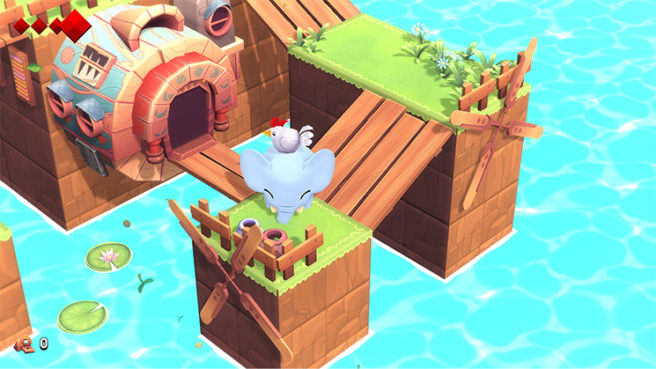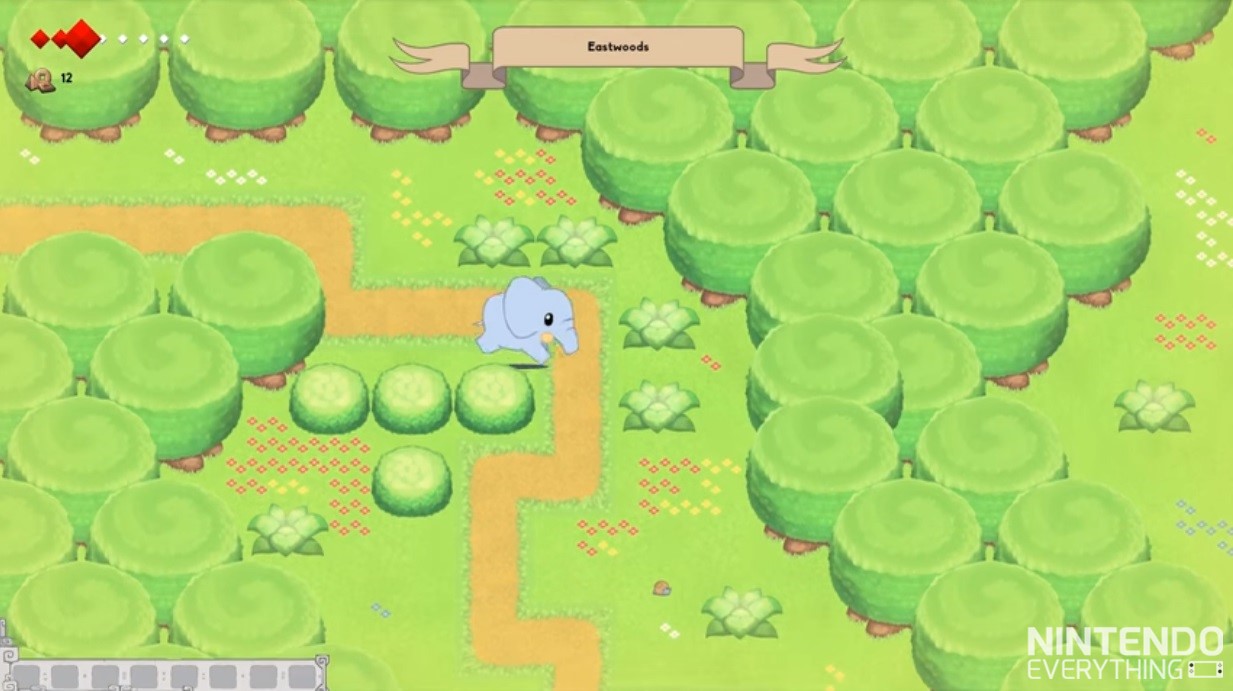[Interview] Yono and the Celestial Elephants dev on Zelda inspiration, how the game found a home on Switch, more
Posted on October 1, 2017 by Brian(@NE_Brian) in Interviews, Switch eShop
One of the big highlights from the most recent Nindies Showcase was the announcement of Yono and the Celestial Elephants for Switch. And you won’t have to wait long to play it. It was announced during the same Nindies Showcase that Yono launches on October 12, meaning it’s just a few days away.
Ahead of the release, we caught up with Niklas Hallin from Neckbolt to learn more about Yono and the Celestial Elephants. Hallin spoke with us about the project’s development, what you can expect from the gameplay, how it’s inspired by Zelda, why the game is a fit on Switch including console exclusivity, and more. As a bonus, we have a rare screenshot from when Yono was originally imagined as a 2D title.
Continue on below for our full interview.
Can you tell us a bit more about Neckbolt? How big is the team working on Yono and the Celestial Elephants?
I am a solo developer, so Neckbolt is really just me by myself. The music for the game was created by a small Swedish studio called Burning Planet.
How long has the game been in development for?
After having planned the project for a while, I began to develop it seriously in the summer of 2015. It took me roughly one and a half years to make the game, and then an additional ten months to manage everything concerning the release and the Switch port.
We’re very curious: how did you settle on making the main protagonist an adorable elephant?
A small elephant suited my needs very well. Elephants are seen as heavy, strong and powerful, but they are also a symbol of wisdom and knowledge. Additionally, this is a video game hero who cannot hold a sword or any other type of weapon, which justifies a lot of the gameplay. I especially like the image of the elephant, whose volume is almost cubical itself, pushing a box the same size at itself.
The art in Yono is very soft and cute looking. Was there any sort of inspiration behind the adorable game models?
In the very beginning this was conceived as a 2D game. The most direct inspiration was the Zelda games for the Game Boy, but also other top-down, pixel games such as Pokémon, Final Fantasy or Earthbound. I switched to 3D in other to be able to make the game world as big and animated as I wanted it, but I kept the top-down camera angle, and I still tried to design character models as if they were 2D sprites.
The game seems to deal with the night sky and stars quite a bit. Will this be the focus of the story?
The Elephant is not a natural animal in this world, but a cosmic, divine being that arrives from above. The celestial star theme connects to the major theme of the story, which in many was is about finding the one’s place in the grand, cosmic scheme of things.
How does progression take place? Will it be similar to Zelda where you try to progress from dungeon to dungeon?
One of the greatest departures from Zelda, in terms of gameplay, is that Yono is more linear. Throughout the game you do learn to use new abilities, but you cannot carry anything with you. Whether you are using Items or Trunk Abilities, you will be using what is available in your close surroundings. This means that you cannot go back to previous areas to unlock new paths. Having said that though, the structure of the game is still very focused on going back and forth between Dungeons and the persistent Overworld.
In the trailer we see Yono sucking up elements around the environment and using them to solve puzzles and side quests. Will there be a big emphasis throughout the game to use your trunk?
Yes. The trunk has a dedicated button on the controller, and it is used to activate a large variety of puzzle interactions. The single trunk, with its multiple uses, is analogue to different items in a Zelda inventory.
There seems to be a number of side quests in Yono and the Celestial Elephants. Could you tell us how a typical side quest plays out?
Most side-quests take advantage of the fact that Yono the Elephant can carry items on his back. Finding peoples missing belongings is the general template. I also have a couple of longer trade-chains, where one item can be exchanged for another, which is in turned wanted by someone else. It is with these character interactions that the game’s surprising RPG influences show themselves.
Based on what we’ve seen, the world feels like it has many environments to explore. How many areas will our little elephant friend be adventuring through?
The young Elephant arrives in a world which is populated by three different peoples: the Humans, the undead Bonewights and the robotic Mekani. Each of these factions have their own capital city, and the humans also have smaller villages to visit. Underneath the big cities is where the Dungeons are, one for each people. In addition to all this there are also forests and wilderness to link the cities to one another.
Yono and the Celestial Elephants seems to be very reminiscent of the overhead 2D Zeldas. Do you think fans of those titles will gravitate towards this game?
Absolutely. That has been the intention all along. The Zelda series is large, and it means a lot of different things to different people. This game tells a story about what Zelda means to me, which has a lot to do with puzzle dungeons and treasure chests.
How was your experience with having the game in the Nindies Showcase?
Nintendo has been very welcoming to me. As a solo developer who hasn’t created a game of this scope before, I don’t have the means to go to showcases by myself. Being allowed to tag along on with someone else, and Nintendo no less!, has been more than I could have wished for back when I started out on this project.
Yono the Celestial Elephants is coming to Switch and PC in October. Are there any particular reasons why you decided to focus on bringing it to Switch, especially as a console exclusive?
Yono was a Nintendo game long before it was an actual Nintendo game. The aesthetics and whole design approach fits squarely into the Nintendo tradition of game design, and I am very happy that Nintendo themselves recognized this. Once Yono had found its natural home on the Switch, it didn’t seem very important to try and expand into the territories of other consoles as well.
Yono feels like it has a quick turnaround between the initial announcement for Switch and release. When did Nintendo’s console come into the picture as a platform you wanted to support?
For most of the year of 2017 I have been in discussion with publishers and Nintendo to make this work. Over the summer the big question was whether I would be able to get the Switch port to work alright in time for the reveal at PAX West, but happily that worked out well. As I mentioned before, the actual development was more or less wrapped up by the end of 2016, and the remaining months up until now has been spent on making the Switch release happen.
Are there any Switch-specific features planned such as HD Rumble?
Nope!
Have you determined a price for Yono the Celestial Elephant when it comes out October 12?
I have not, and I might not even be the one to make the final decision on that. But I can tell you that it will be reasonably priced.
Nintendo Everything would like to thank Niklas Hallin for participating in our interview.

